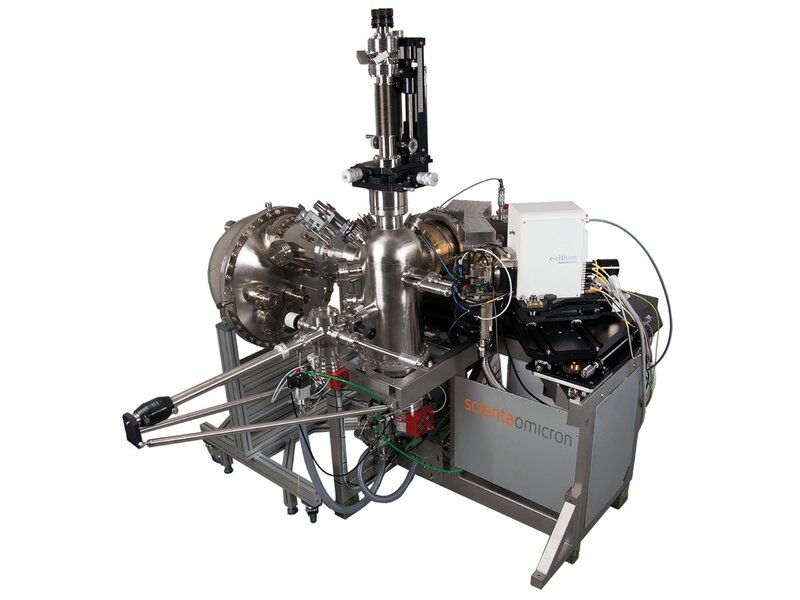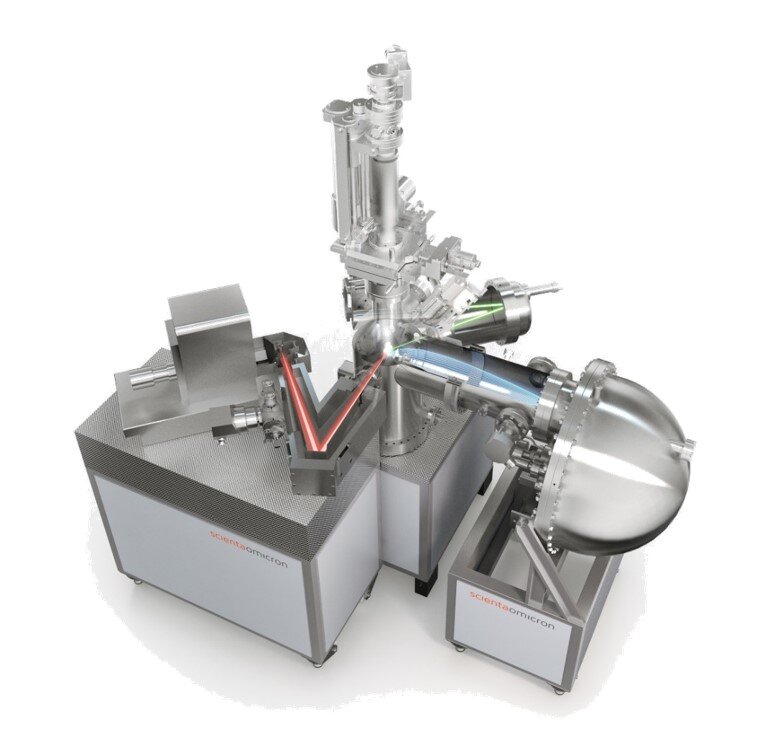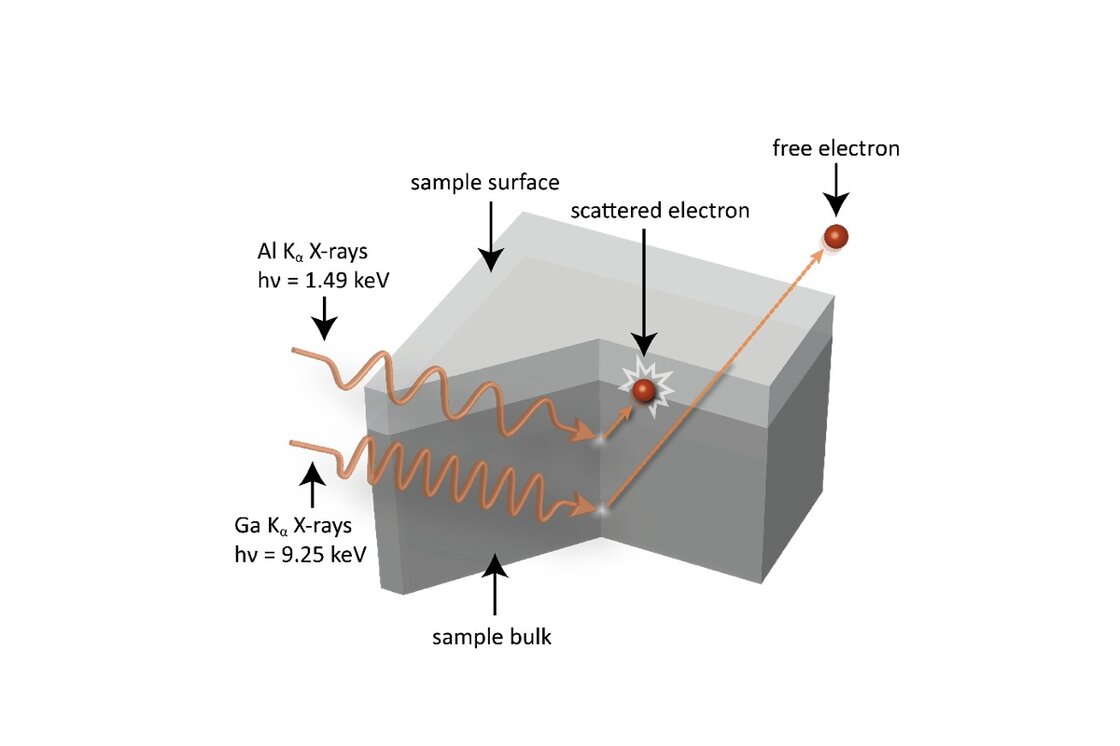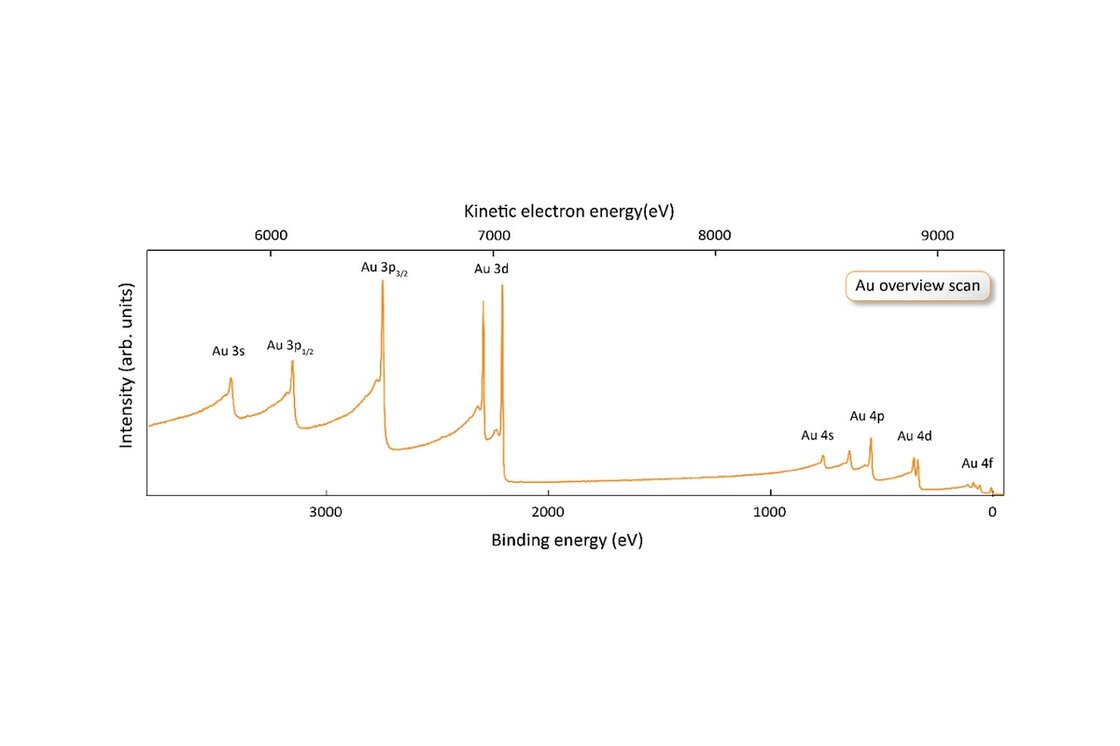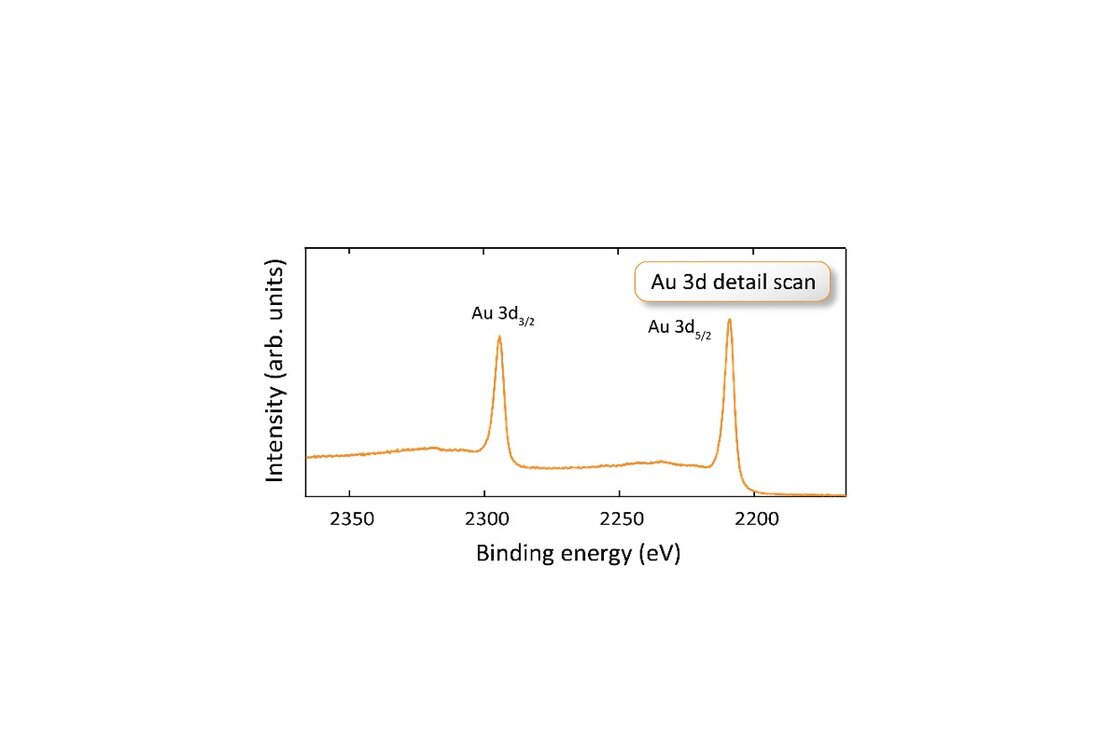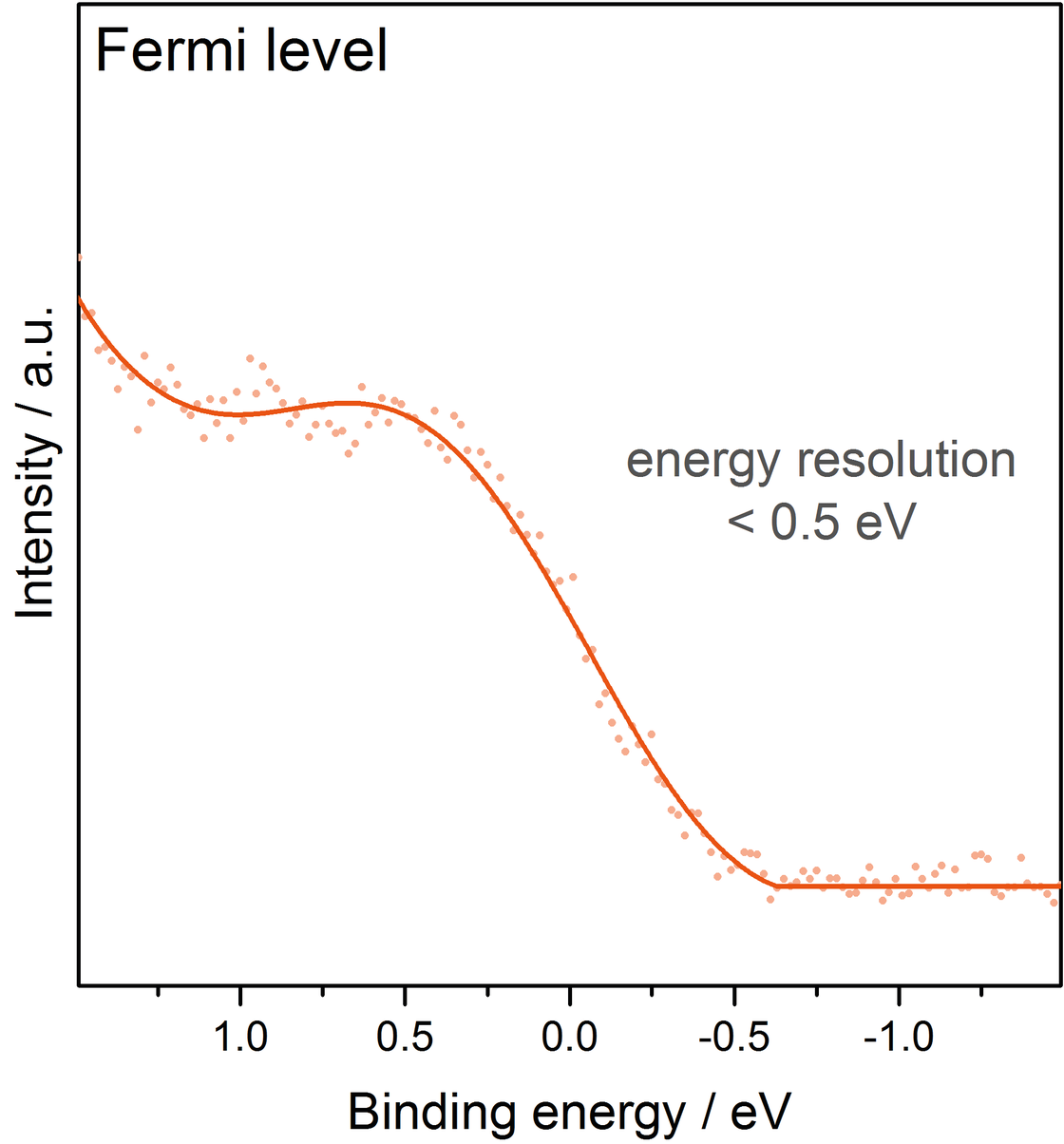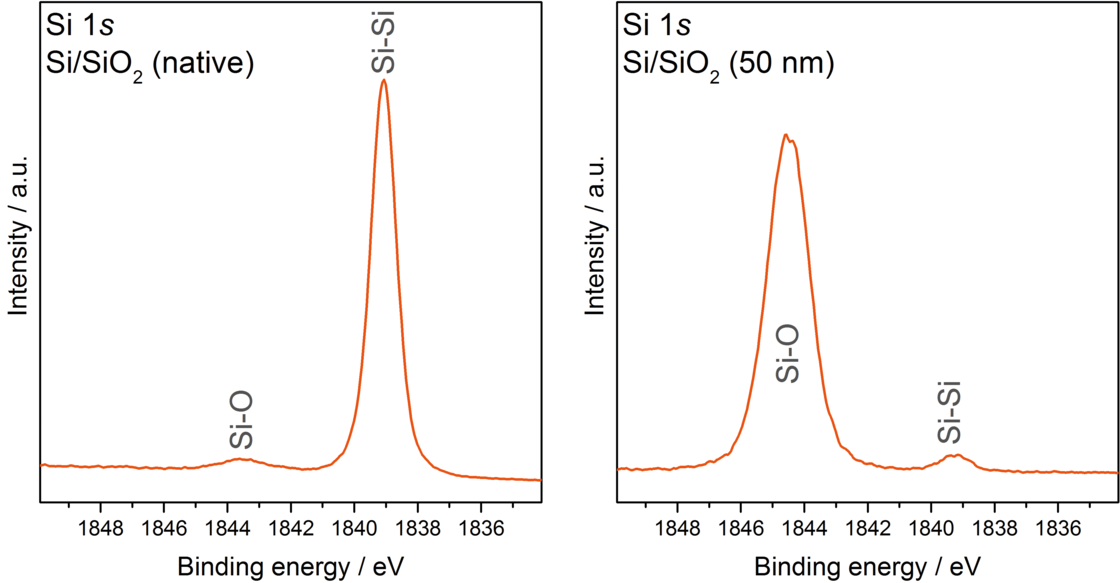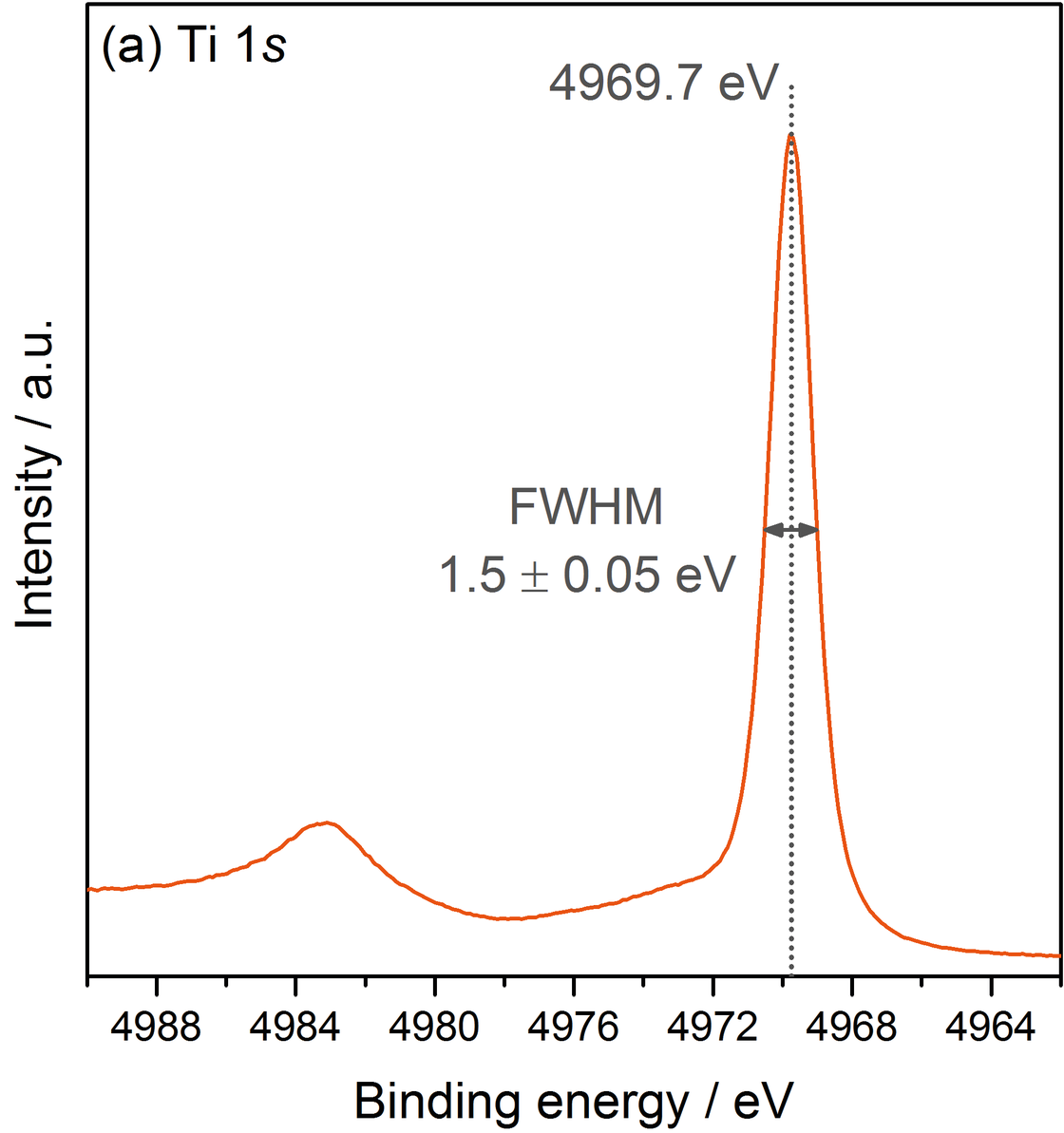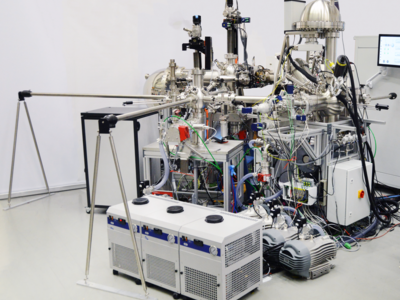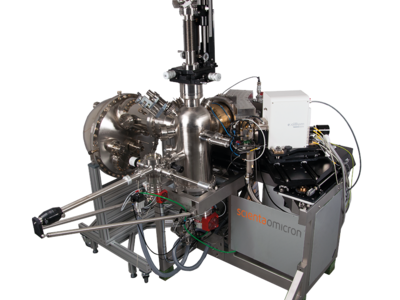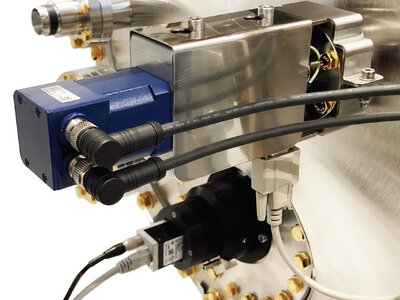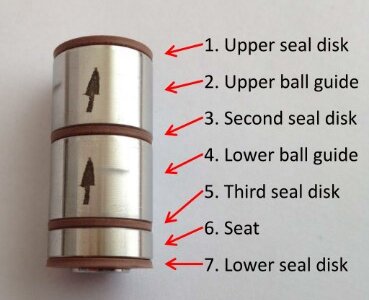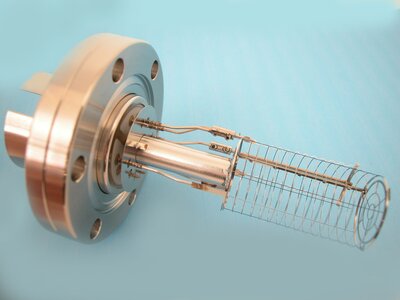Scienta Omicron's HAXPES Lab brings hard X-ray photoelectron spectroscopy (HAXPES) capability directly to the local laboratory environment. Using world class technology and expert engineering, the HAXPES Lab sets the standard for laboratory based high energy photoelectron spectroscopy. This novel system probes bulk sample properties and accesses deep core level electrons via photoelectron spectroscopy (XPS) without the need for a synchrotron.
HAXPES Lab is designed to allow hard X-ray photoelectron spectroscopy (HAXPES) measurements in standard lab environments. The instrument offers the unique possibility to investigate bulk properties of various materials, analyse buried interfaces and access deep core levels. HAXPES Lab is a convenient to use turnkey UHV system which includes a 9.25 keV monochromated Ga Liquid Metal X-ray Source and a EW4000 energy analyser allowing for analysis in the full kinetic energy range up to 9252 eV.
More Information
Study Bulk and Interfaces in your Home Laboratory
Photoelectron spectroscopy is a well-established tool for analysing a wide range of chemical and material properties. Traditional photoelectron spectroscopy instruments employ low energy X-ray sources limiting the kinetic energy of the photo-emitted electrons. Low kinetic energy electrons have short inelastic mean free paths (IMFP), confining analysis by traditional instruments to the top several nanometers of a material‘s surface. HAXPES, using higher kinetic energies, greatly extends the analysis depth.
While HAXPES measurements have been successfully deployed at synchrotrons, obtaining access to the required end stations is a significant challenge. The HAXPES Lab solves this problem and serves as a complete analytical tool by bringing cutting edge HAXPES directly to the end user’s laboratory. Complimentary soft X-ray sources and charge neutralisation are available. A comparison between different lab sources highlights the information depth advantage the Ga source provides. Information depth is defined as the region in which 90 % of the total signal originates. Beyond this advantage the monochromated Ga X-ray source provides higher flux than alternative hard X-ray lab sources.
Proof of Principal Measurements
The higher energy of the Ga Kα X-rays is exploited by the high intensity of the Excillum Ga liquid jet source provides a wider energy range than standard Al K Kα X-rays and deeper core levels can be reached, and at the same total instrument energy resolution as a standard monochromatized XPS instrument, allowing for high resolution HAXPES measurements in the home laboratory.
The higher penetration depth of Ga Kα X-rays is exploited by the high intensity of the Excillum Ga liquid jet source providing the greatest depth sensitivity from any laboratory hard X-ray system. As shown in the figure, the metal silicon peak is still visible through 50 nm of SiO2. Chemical information from deeper into the bulk than possible from Al or Cr based sources is possible in the HAXPES Lab with efficient time scales.
Forefront of Materials Research
The HAXPES Lab places the user at the forefront of materials research with its novel analytical capabilities. Unprecedented measurements of bulk electrical and chemical properties are now possible. Users can easily execute a chemical analysis of real world samples without the need for destructive and artifact inducing surface preparation steps.
This capability is critical for many high impact measurements, including properly analysing buried layers in energy harvesting devices and batteries. Shown in Figure is a deep core Ti1S spectra from a single crystal rutile sample with a binding energy of 4969.7 eV. This measurement was acquired by HAXPES Lab in 35 minutes.
A real-world HAXPES Lab example analysis is shown in Figure on a complex oxide transistor stack. This structure exploits the presence of a 2D electron gas at the interface between the In2O3 and ZnO. Al 1s peaks are measurable, even when the Al is buried 33 nm deep. Core level Zr and In peaks, unmeasurable with standard XPS, are easy to find. These measurements were taken over 2-4 hours, thus proving the practical capabilities of the HAXPES Lab.
Results
Electron-donating amine-interlayer induced n-type doping of polymer:nonfullerene blends for efficient narrowband near-infrared photo-detection
Inherently narrowband near-infrared organic photodetectors are highly desired for many applications, including biological imaging and surveillance. However, they suffer from a low photon-to-charge conversion efficiencies and utilize...
The Role of SnF2 Additive on Interface Formation in All Lead-Free FASnI3 Perovskite Solar Cells
Tin-based perovskites are promising alternative absorber materials for lead-free perovskite solar cells but need strategies to avoid fast tin (Sn) oxidation. Generally, this reaction can be slowed down by the addition of tin fluoride...
Development of Laboratory-based Hard X-ray Photoelectron Spectroscopy
In this paper, we describe the basic performance of laboratory-based hard X-ray photoelectron spectroscopy (HAXPES Lab.) as well as various measurement examples and future prospects. We investigated the energy resolution and measurement...
State-of-art photoemission spectroscopy with laboratory-based light sources
Photoelectron spectroscopy is an experimental technique to directly observe the electronic structure of materials. In particular, Hard X-ray Photoelectron Spectroscopy (HAXPES) allows chemical states analysis of buried layers in electronic...
Reference Systems
Downloads
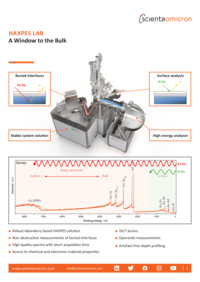
HAXPES Lab: A Window to the Bulk
Scienta Omicron‘s HAXPES Lab brings hard X-ray photoelectron spectroscopy (HAXPES) capability directly to the local laboratory environment. This novel system probes bulk sample properties and accesses deep core level electrons via photoelectron spectroscopy (XPS) without the need for a synchrotron end station. Using world class technology and expert engineering, the HAXPES Lab sets the standard for laboratory based high energy photoelectron spectroscopy.
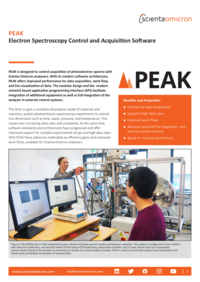
PEAK Brochure
PEAK is designed to control acquisition of photoelectron spectra with Scienta Omicron analysers. With its modern software architecture, PEAK offers improved performance for data acquisition, workflow, and live visualisation of data. The modular design and the modern network-based application programming interface (API) facilitate integration of additional equipment as well as full integration of the analyser in external control systems.
EW4000 Brochure
The EW4000 electron analyser is a state-of-the-art and widely used electron analyser for HAXPES. It is also one of the key parts is Scienta Omicron’s HAXPES Lab. Expanding the parallel angular detection range to 60° in the full range from UPS via XPS to HAXPES gives great possibilities for high transmission measurements as well as novel Standing Wave and XPD experiments.

